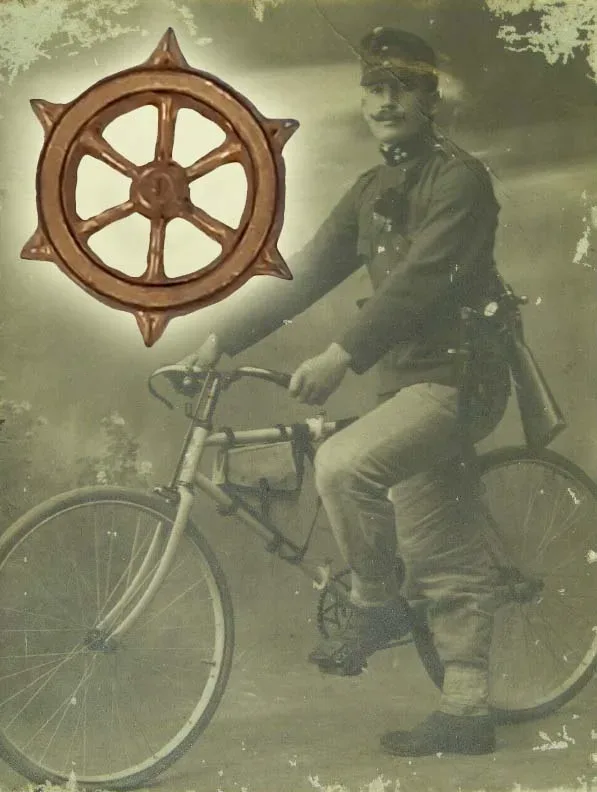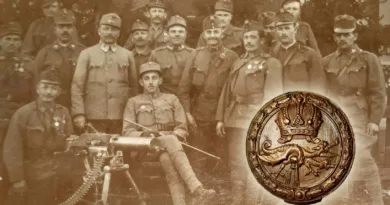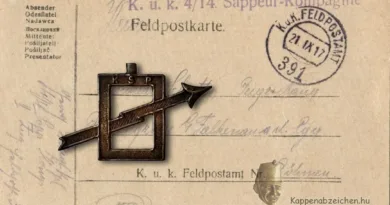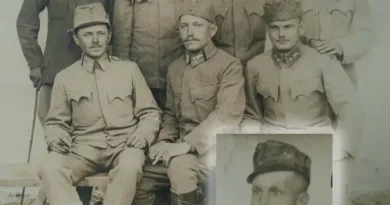Volunteer cyclist insignia
In connection with Miklós Szanyi’s post about cycling units, I would like to share a few thoughts on their distinctive insignia.
As a result of technical advances at the millennium in the early twentieth century, airplanes, automobiles, motorcycles, and bicycles appeared in transportation. When the world’s armies realized the potential of using new technologies, even these new vehicles were immature and quite expensive, and the average person couldn’t even afford a bike, let alone an aviation miracle aircraft. On July 25, 1896, the Ministry of Defense of the Austro-Hungarian Monarchy issued a decree according to which 1 officer and 4 non-commissioned officers / soldiers should be assigned to corps headquarters, 3 non-commissioned officers / soldiers to division headquarters, and 1 non-commissioned officer / soldier to brigade headquarters as cyclists. In addition, if more human resource was available for the headquarters, 4 or 3 non-commissioned officers or soldiers, depending on the number of battalions, and 1 non-commissioned officer or soldier for hunting battalions, shall be employed as cyclists. Soldiers in the reserve who primarily volunteer for this service and have their own vehicle apply to this service. Cyclist soldiers, who ensure the flow of information between the headquarters of the higher headquarters and the headquarters of the subunits, were primarily required to perform significant courier duties.
The decree regulated the compensation for the use of one’s own bicycle during the exercises, which payd 20 forints to the cyclist soldier at the end of at least 10 days of use and 2 forints per day. Expenditures of this nature were accounted for by the district headquarters to the Ministry of Defense.
It also regulated equipment and clothing for cyclists that was the same as their original unit’s. A sign should be affixed to the bicycles with the abbreviated name of the unit to help identify the bicycle and the soldier.
The army exercises of 1907 and 1908 were already attended by half a century of volunteer cyclists from the army, numbering 3 officers, 52 cyclists and 1 officer, according to the reports of Lieutenant Lajos Piskárosi Szilágyi.
After the outbreak of World War II, a call appeared in the Budapest News on November 1914 for the Budapest District Command to set up a cycling squad of volunteers. Application conditions were:
– at least 17 years old age,
– an impeccable background,
– earlier completion of military obligations,
– insurgents, born between 1879 and 1900, were obliged to apply only if they had already passed the military aptitude test and were deemed unfit there or suitable only for guard duty,
– In the case of minors, written parental consent had to be provided at the time of application.
Since owning a bike was also a condition of voluntary cycling service, some dealers advertised their vehicles in stock in a newspaper.
This form of service may have saved the individual from the shame of being unfit for normal military service, or given a certain degree of security to parents and family members that the reporting service was less dangerous than the life in the trenches.
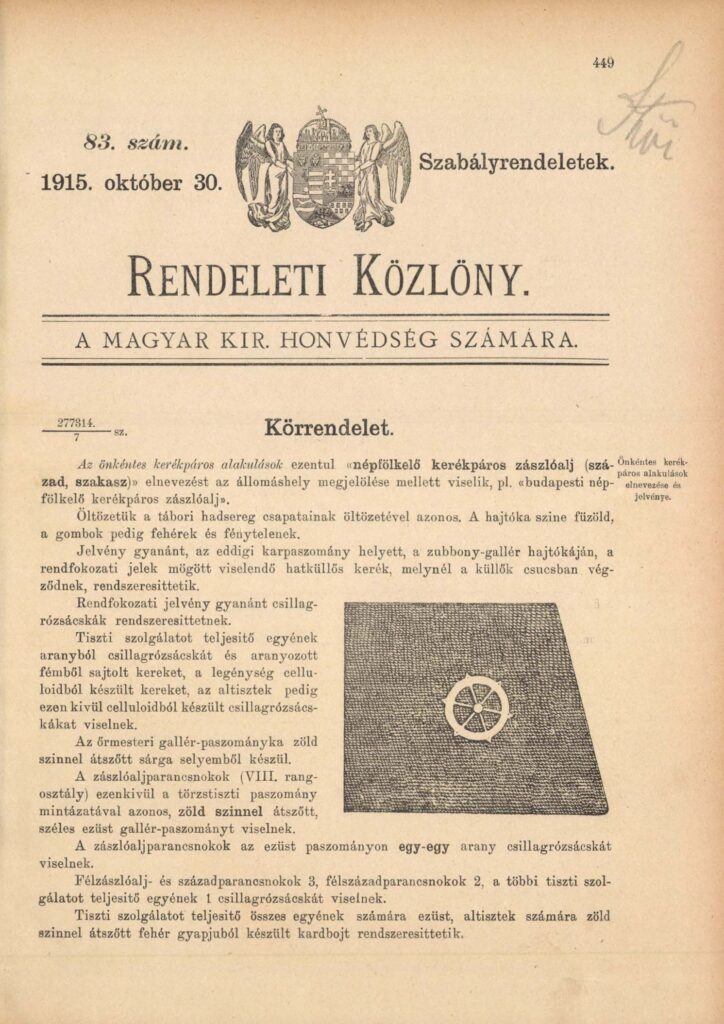
On November 30, 1915, the regulation on volunteer cyclists was published in Circular Decree No. 277814/7 of the Decree of the Army. Based on this, the volunteer cycling units were now given insurgent unit name by the name of the garrison town, for example, the name of the volunteer cycling squadron was changed to the Budapest insurgent cycling squadron. The regularized clothing was identical to the field brown uniforms of the infantry, the color of the collar lapel was grass green, and the buttons were white and dull. Instead of the distinctive arm band used so far, the decree introduced six-spoke wheels ending in peaks at the ends, which had to be worn on the collar drives behind the ranks. Ranks were marked with rosettes instead of stars.
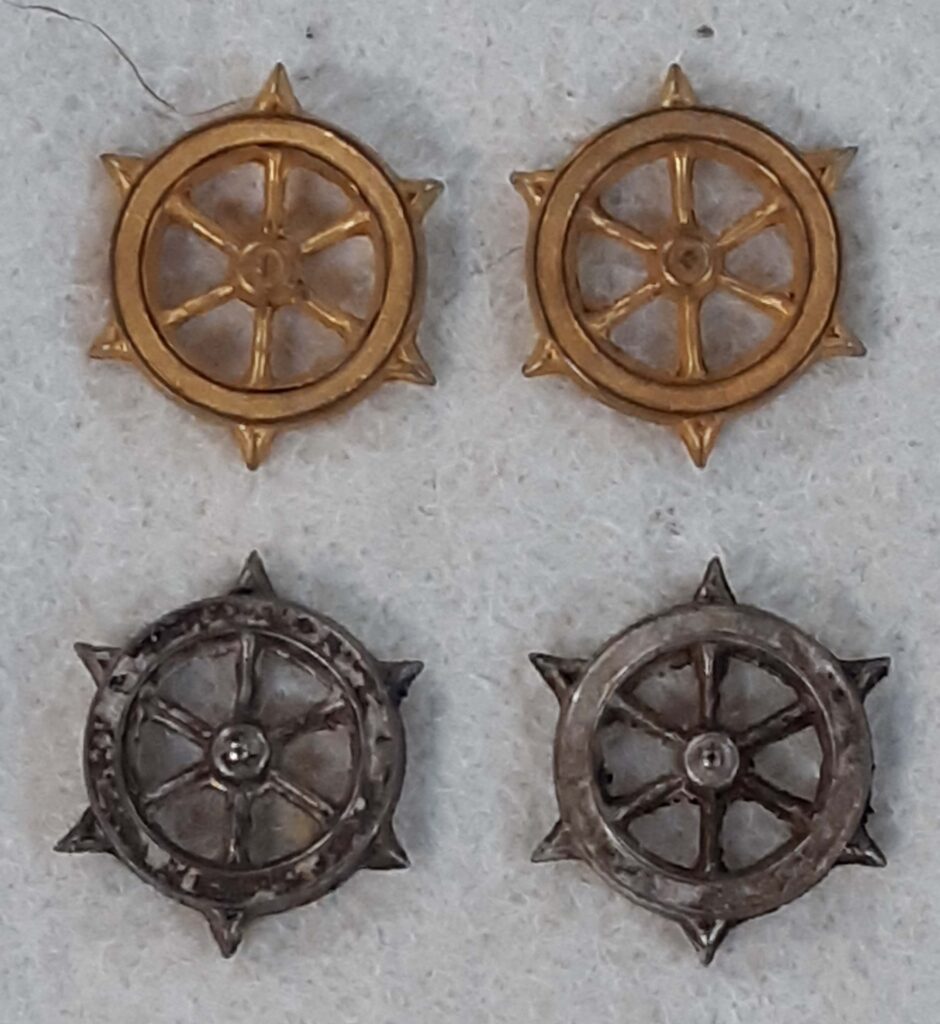
The officers wore a gold rosette and a metal armory badge as follows:
The battalion commanders wore a gold star on a silver trimmings, the half-battalion and squadron commanders three, the half-company commanders two, and all other officers one gold rosettes. The non-commissioned officers wore a celluloid rosette and a wheel, while the crew wore a celluloid-pressed wheel.
Volunteer / insurgent cyclists and smaller units operating in various higher units were reduced to two companies in January 1918.

